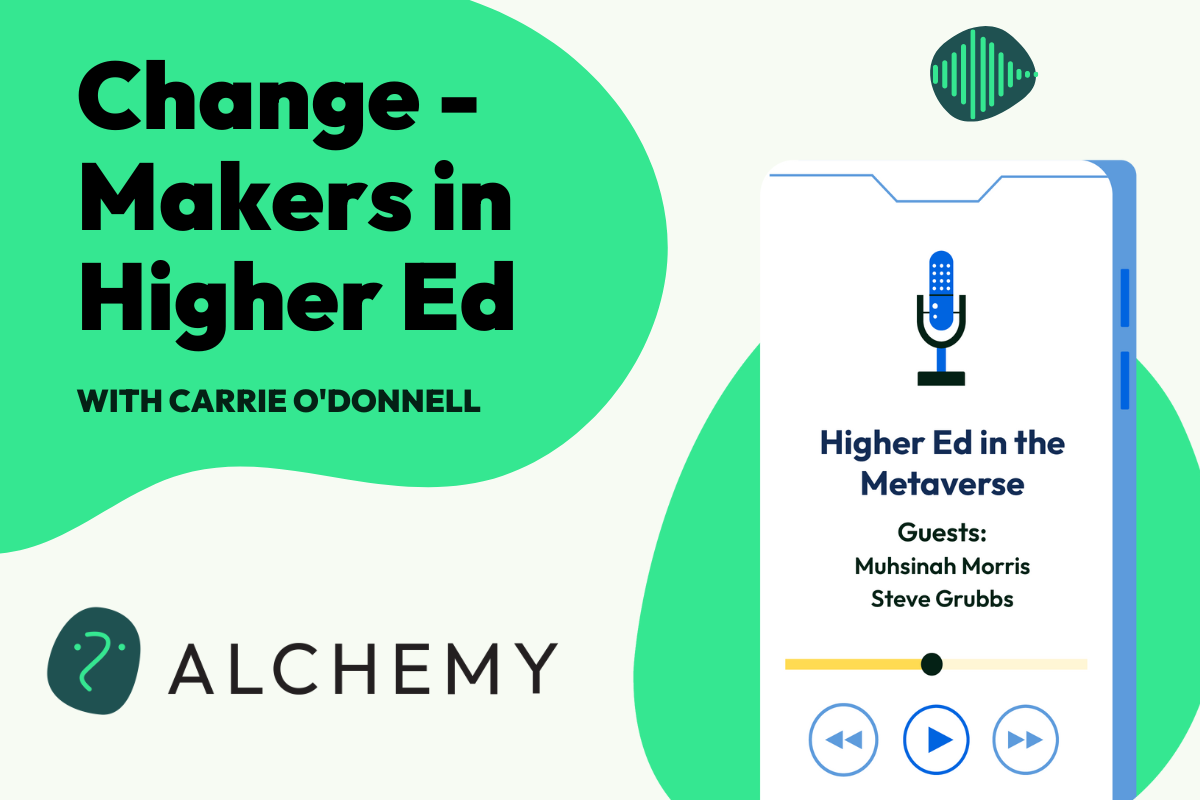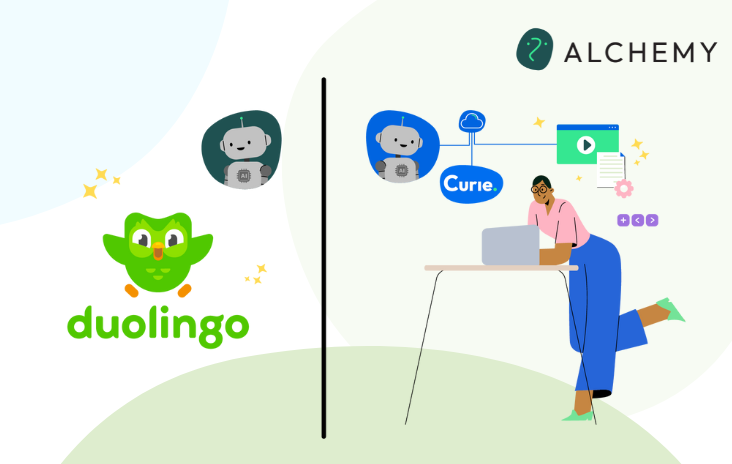
As augmented reality (AR) and virtual reality (VR) learning experiences have grown in the past few years in higher education, so has an interest in building out metaverse platforms for institutions, or metaversities, to create immersive educational experiences. In our most recent episode of Change-Makers in Higher Ed, Carrie O’Donnell, our CEO, explored higher education in the metaverse with two individuals who are leading the way.
Our Guests
Dr. Muhsinah Morris is the director of the Virtual Reality Project and assistant professor in education at Morehouse College, a private, male, historically black college in Atlanta. Steve Grubbs is CEO of Victory XR, a leader in the field of learning in augmented and virtual reality.
Muhsinah and Steve are both pioneers, pushing for sweeping change in teaching and learning by implementing radical, often incredible, opportunities for students to learn through VR. In this episode, you will be guided into a classroom in the metaverse.
What’s a Metaversity?
The metaversity is equal parts concept and physical place, where a university uses the metaverse as a platform for learning experiences. In this immersive learning space, there’s a level of interactivity beyond what can be achieved in the in-person classroom.
Students in virtual classes participate in projects, simulations, experiments, and field trips. They may even travel back in time to important moments in history. Faculty can dip in and out of small groups, interact with students one-on-one or engage with an entire class. Classrooms in the metaverse are transforming the learning experience and creating new opportunities for learning for all.
What Happens in a Metaverse Classroom?
Today, many institutions are partnering with technology companies, like VictoryXR, in order to create virtual learning experiences for their students, which allow students and faculty to interact in a synchronous virtual environment in which they can immerse themselves in a learning exercise.
Steve gave an example of a course experience:
“In one of our rooms, one of our experiences, we have a cadaver lab and cadaver labs are very expensive. Expensive to maintain and difficult to get a product, frankly. Imagine that, your students in the cadaver lab, next to each other, there’s a professor with you, and in the center of the room is the cadaver. Everybody gathers around the cadaver and the professor takes her hand, plunges it into the chest cavity, pulls out a human heart, no longer beating, and passes it to the student. That student takes it from the professor again, in virtual reality, they’re right next to each other, but in the real world, they might be a hundred miles apart, and begins taking it and expanding until it’s 10 foot tall. Then, the students and the professor step inside that human heart, look at the ventricles, the cavities, the professor says, wait a minute, produces a diseased human heart, and expands it until it’s 10 foot tall. Now, they step into the diseased heart and begin to understand what it means to have a healthy heart and a diseased heart. Then, she produces a stent, inserts the stent into that artery and teaches the process of repairing a clogged artery. Certainly in health sciences, this is a really obvious use case?”
Learning in the Metaverse = Opportunistic Reality
In describing her work in virtual reality, Muhsinah talked about the impact it has had on her students. “I have coined this term about what a metaversity has done, not just for me, but for my students, and I call it opportunistic reality,” she said. “Education paired with accessibility and connectivity has given way to what I call opportunistic reality and this opportunistic reality allows for students to be able to map their pathway and see themselves differently in their disciplines as we move forward.” She describes how learning in the metaverse will be a 1.5 trillion dollar industry by 2030. “Every generation is gonna have to be technologically savvy. It’s about how we train our young people on how the best use cases for this technology. So that’s what we’re doing at Morehouse.”
In terms of accessibility, it’s clear that VR classrooms bring interactive, immersive, and engaging education to all. Students enjoy learning in the virtual classroom. In fact, they thrive. Our mission with Alchemy is to empower faculty to create inclusive and engaged learning experiences, and we are energized by the opportunities that the metaverse holds for moving learning forward and meeting the needs of all learners.
Play Now

